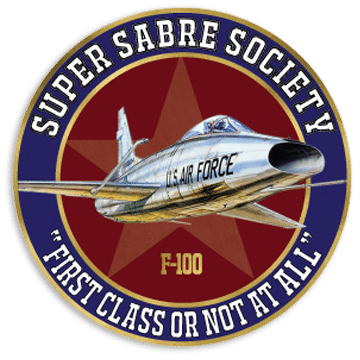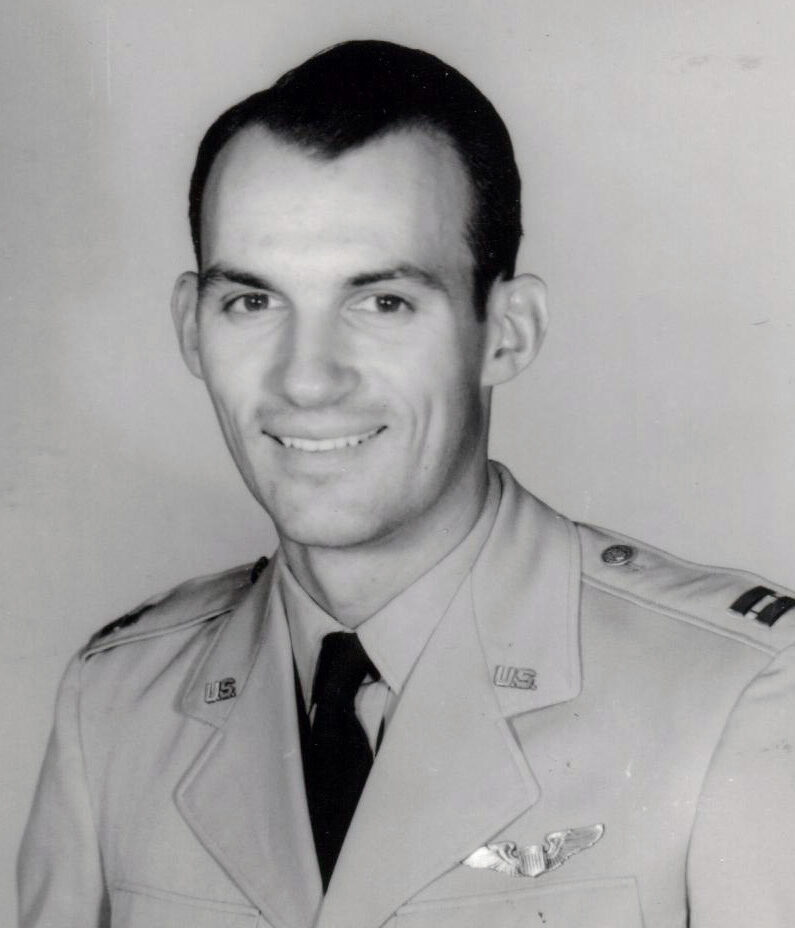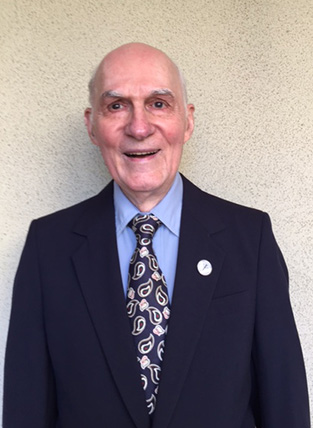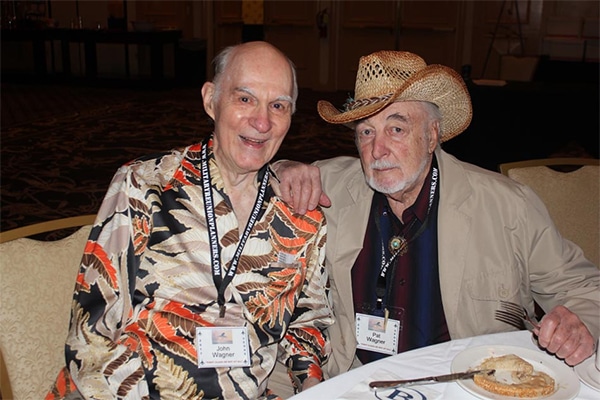After graduation, I began a 30-year career in the Air Force. I was a Cold War warrior who spent time rotating between fighter pilot cockpit assignments and staff assignments at the Pentagon, Pacific Command (PACOM) Headquarters, the Air Force Academy, and Pacific Air Force (PACAF) Headquarters.
My Cold War assignments involved pulling tactical nuclear alert duty in the Far East and the United Kingdom against targets in both western and far eastern regions of the then Soviet Union. Combat experience in a hot war involved over 200 F-4 missions against North and South Vietnam, Laotian, and Cambodian targets.
A couple of unusual events occurred during my years of service. I thought I was immortal until the day my F-100 came unglued and I had to “punch out” during an air-to-air combat training mission. I proposed to Adele the very next day and we were married in 1959. (Read John’s Caterpillar story on his bio page!)
In March and April of 1970, during my 4-year tour in the Pentagon, I ended up as part of a strike-breaking joint task force instituted by President Nixon during the postal strike. The operation was named Graphic Hand. I was one of two Air Force officers on the joint service task force in the Pentagon. Only a very limited number of people were involved up to the point where we activated and fully manned all the service command posts in the Pentagon to receive the President’s announcement.
[Editor’s Note] Just before midnight on March 17, 1970, a letter carriers’ local disobeyed national leadership and voted to strike. The strike threatened to bring the nation to a standstill. Mail was still critical to the nation’s communication infrastructure. Wall Street feared problems that would arise if brokers could not send out confirmation orders for buying or selling. In a world without personal computers or direct deposit, expensive long-distance phone calls or telegrams became the only communication choices for businesses and individuals alike. Even small-town Americans felt the sting of the strike, as most mail traveled through large city post offices that were the target of the strikers.
On March 23, 1970, President Nixon1 addressed the nation by television. He declared a state of national emergency and called upon the military to assist the Post Office in maintaining essential postal services and ensured that pension, welfare and social security checks would go through. Nixon ordered 25,000 soldiers into New York City to get some mail moving. By the night of the president’s address, the strike had disrupted mail service in at least 30 cities in 13 states. More than a quarter of the nation’s postal workers had stepped down in protest. According to the Chicago Tribune: “Pentagon authorities stressed that the army would not take over the supervision of postal operations but that military personnel would be put at the disposal of the post office department.”
Although the strike had spread across the nation “Graphic Hand” was centered in New York City. There, between 40 and 60 million pieces of mail were stacked up waiting to be processed. On March 24 “some 400 sailors, 300 air force men, and 100 army troops were taken to the general post office on 8th Avenue and 33rd Street, and began orientation studies of its operations.” The men were directed to assist at clerk windows where needed, selling stamps and money orders. But most would be busy loading and unloading mail and sorting outgoing mail. Wearing fatigues, they were easy to spot among the postal supervisors and non-striking workers. Military personnel transported mail to substations delivered bulk mail to businesses and charities but did not make any residential deliveries.2
Following Air Force retirement, Adele and I remained in Hawaii and I registered with the Securities and Exchange Commission as an investment advisor. This led to my managing Pacific Options, a hedge fund, for family and close friends. Pacific Options survived the 1987 stock market crash and when closed in the mid-nineties, provided a positive return for all participants. I stayed involved in the stock market as a day trader up to the present.
In 1999, while living in Hawaii, I served as foreman on the jury that convicted Byran Uyesugi, a Xerox service technician who opened fire inside the Xerox Building in Honolulu on November 2, 1999. With a semi-automatic weapon, he killed his supervisor and six co-workers. The experience of examining the lives of Uyesugi and the other persons involved in this tragedy is something I doubt I’ll ever forget.
In 2003 Adele and I moved to California to be close to our only granddaughter as she grew up. We have lived in two condominiums since retirement, one is in California and one in Hawaii. Condominiums were a new form of homeownership which started in the 1960s. It has been a learning curve for us and other condo owners as the volumes of condominium case law proves. I have served as Homeowners Association President for both properties and my primary task has been attempting to resolve homeowner disputes without ending up in court!
It’s funny how the memory works. I can remember in great detail many things from my time on active duty. After that, the years have just seemed to fly by in a haze.
Surprisingly, the possibility of another postal strike in 1978 had President Carter ready to mobilize troops again. The Cincinnati Enquirer noted on July 20, WASHINGTON (AP)-The Pentagon is prepared to mobilize up to 90,000 or more troops to help move and protect the mail-in event of a nationwide postal workers strike, administration sources say. A Pentagon plan Is ready if President Carter Issues the necessary orders…
Sources: National Postal Museum, Wikipedia).
John L. Wagner “Headed West” in 2021.
John Wagner Caterpillar Story
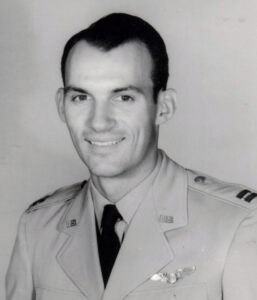 It was late Good Friday afternoon of 1959 [4/27/59] and I was manning the Group Scheduling Desk at Luke AFB. My old roommate, George Black (later killed in a T-33 crash in Japan) called in from the 14th Squadron that he wasn’t feeling well and needed someone to take his fight. George said the student was all briefed and ready to go. Rather than call around to other Squadrons for a replacement IP or cancel the flight, I told him I’d take it and asked “What’s the mission?”. He said “Air to Air – one on one” and he’d tell the student to use my “Ugly” call sign. It was one of the last missions of the day and we were running late, so I skipped the pre-flight, strapped in, contacted Ugly #2 and got airborne for the air-to-air range south of Ajo, AZ, over the Organ Pipe Cactus National Monument.
It was late Good Friday afternoon of 1959 [4/27/59] and I was manning the Group Scheduling Desk at Luke AFB. My old roommate, George Black (later killed in a T-33 crash in Japan) called in from the 14th Squadron that he wasn’t feeling well and needed someone to take his fight. George said the student was all briefed and ready to go. Rather than call around to other Squadrons for a replacement IP or cancel the flight, I told him I’d take it and asked “What’s the mission?”. He said “Air to Air – one on one” and he’d tell the student to use my “Ugly” call sign. It was one of the last missions of the day and we were running late, so I skipped the pre-flight, strapped in, contacted Ugly #2 and got airborne for the air-to-air range south of Ajo, AZ, over the Organ Pipe Cactus National Monument.
We briefed on the way down that once over the range at 25,000 ft. the “stud” would take a position off my right wing at 30,000 ft. and then he’d be cleared to attack. After the first rat race, he was re-positioned on the left wing and we went at it again. I was pulling in hard to get him in a scissors when the old J57 came unglued, the cockpit filled with thick smoke and I couldn’t see a thing. I released Gs and jettisoned the canopy. Things cleared up considerably so I switched to Guard channel and informed the world I was about to stopcock and solo my F-100C. The student was now in trail and he said he was surprised to see me flying by off his wing without my airplane. He later told me he felt a surge of pride in getting his first kill!
The ejection sequence went as well as advertised and I extended my arms and legs to stop the tumbling and began to free fall. Then I realized that the lanyard, aneriod, and auto opening had not taken place. They were set to deploy at 14,000 ft. (Flagstaff Mountains) and I was sure something was wrong. I wanted to see a canopy over my head so I grabbed the ripcord handle and pulled.
The canopy looked great and so did the view from 20,000 ft., but a couple of things crossed my mind: 1) I wondered what I might have missed by skipping the preflight. 2) I wondered why I was getting lightheaded. I had forgotten to hook up my oxygen bottle so I pulled the apple and stuck the tube in my mouth. The head cleared and I realized it would take a while to hit the ground.
My radio call and the student had alerted Luke AFB. Walt McMeen and his jet copter were well on the way before I pulled on the risers to avoid a barbed wire fence and hit the ground. I spread out the canopy and laid down in the middle. A couple of ranchers drove up a nearby road and walked over with a welcome canteen of water. Except for a scratch on my chin from the helmet strap, everything was fine and my trip back to Luke was greatly appreciated.
Col. Spain met me at Luke, an accident board headed by old friend Dan Neff was appointed. Walt confirmed the fence I avoided was the U.S. – Mexico border and I’d actually landed in Mexico. This wasn’t mentioned in any report. The aircraft was trimmed up and landed among the cactus in relatively good shape. The doubled spool J57 engine was the material failure cause of the accident. A bearing had failed. Seems like the airlines got 2,000 hours between overhaul on the J57, SAC got 1,000 hours, and TAC 500. This confirmed Bob Hoover’s comment that the early F-100s were flying testbeds.
This incident woke me up to the fact that I wasn’t immortal and it was time to get married. I’d been dating Adele French for two years and proposed to her the next evening. We’re still going strong after 55 years of world travel and adventure.- John Wagner
